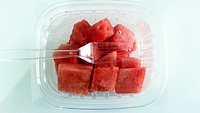Risk Assessment Model Tells Processors the Likelihood of Consumer Exposure to Foodborne Pathogens From Pasteurized Milk

Image credit: cottonbro studios via Pexels
A new risk assessment model developed by researchers at Penn State University helps milk processors evaluate possible consumer exposure to Bacillus cereus from milk that has been subjected to high-temperature, short-time pasteurization. The model is intended to inform milk food safety decision-making.
High-temperature, short-time pasteurization is the most commonly used pasteurization method in the U.S. Certain bacteria in milk, including B. cereus, have the ability to withstand pasteurization and sicken consumers.
B. cereus is a group comprising eight species that are diverse in terms of their implications on food spoilage and safety. Addressing this, the Penn State researchers’ approach generated experimental growth data and models for different genotypes of toxin-producing B. cereus strains, elucidating differences in the growth potential of different genotypes in milk and enabling a more accurate exposure-assessment model.
After a dairy processor tests milk to identify the presence and quantities of B. cereus, such data can be input into the model to predict if the pathogen is likely to propagate in a large proportion of produced food units, resulting in a high risk of exposure to the public.
Importantly, when the researchers put the model to use, it was able to demonstrate how differences in exposure to various B. cereus genotypes can be translated to differing levels of foodborne illness risk. Foods contaminated with 100,000 cells per milliliter (mL) of B. cereus have been linked to foodborne illness. The new model predicted that some genotypes would grow to 100,000 cells per mL of milk, but that the concentration per simulated milk container could vary from very low levels of bacteria to ten times more than the threshold for likely infection.
The researchers developed their model by measuring in skim milk the growth of toxin-producing B. cereus strains across the gene profiles of six related bacteria groups with various virulence. The strains did not grow in high-temperature, short-time pasteurized milk stored at 39 °F or 43 °F. At 46 °F, one strain grew; at 50 °F, 15 strains grew; and all strains grew at temperatures of 57 °F or above.
Using the initial growth data, the researchers developed secondary growth models and the exposure-assessment model. The model focuses on the high-temperature, short-time pasteurized milk supply chain and up to 35 days of consumer storage, with an initial contamination of 100 cells per mL. The model estimates that 2.8 percent of milk containers could surpass potentially dangerous levels of B. cereus by day 21, increasing to 4.1 percent by day 35.
Moving forward, the researchers are working on open-access technology that incorporates the model for food processors to use in food safety decision-making. The system would allow the user to enter the concentration of bacteria detected in a milk sample and information about the genotype, which would produce a prediction of the percentage of milk containers likely to carry B. cereus at levels exceeding the concentration linked to foodborne illness.
The project was funded by the U.S. Department of Agriculture’s National Institute of Food and Agriculture (USDA’s NIFA).
Looking for a reprint of this article?
From high-res PDFs to custom plaques, order your copy today!






